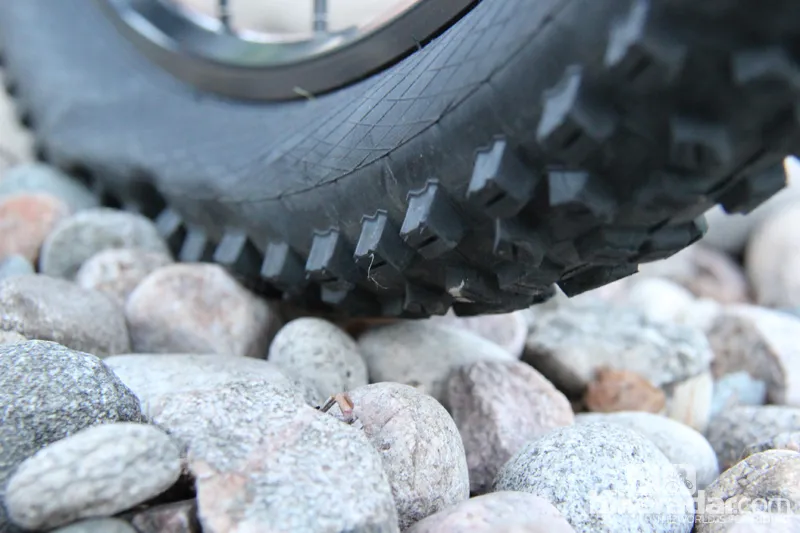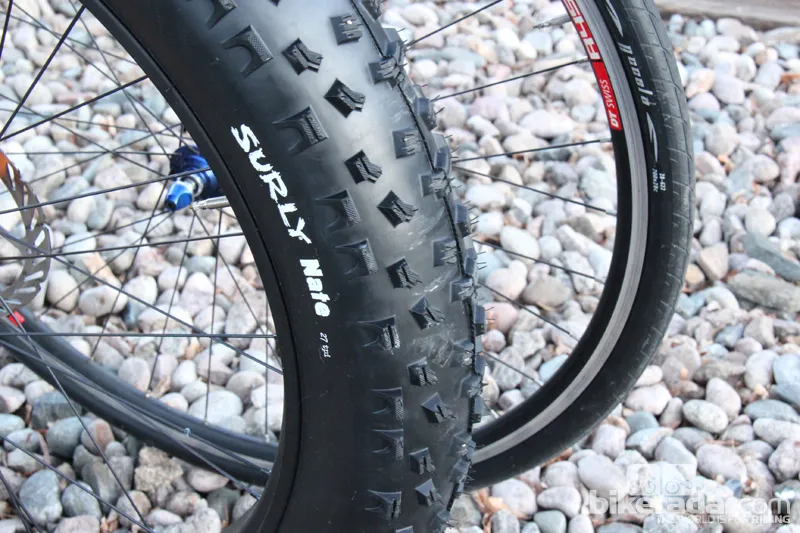Question: I’m relatively new to mountain biking, so forgive me if this seems silly, but how important is it to follow the recommended tire pressure guidelines? They seem much higher than I feel I should be running.
Answer: Tire pressure is a critical component in getting the most out of your mountain bike. There are a number of variables that go into figuring out the ideal pressure range for a bicycle tire. Many of those are completely out of the control of the manufacturer, causing them to err on the side of caution. “It’s a lawyer thing, for sure,” said Schwalbe's North American OE sales manager Henry Horrocks.
A tire’s maximum pressure is not the pressure at which it will burst like a balloon; more often than not it’s the rim that can’t withstand the pressure. Not all bicycle rims are created equal; some can withstand much higher pressures than others. Companies have no way of knowing which rims you, the consumer, will be pairing with their tires. Consequently, their maximum recommended pressures tend to be conservative.
For mountain bikers, the maximum pressure rating generally isn't the issue, as most riders run well below this number. Many – myself included – often run pressures well below the minimum rating, especially with tubeless setups.
Why go lower? Well, it can allow your tires to roll faster and absorb more trail irregularities, and can increase traction as well as comfort. There are numerous studies that offer supporting evidence (though most focus exclusively on road performance). When it comes to mountain biking, finding one's ideal tire pressure is a qualitative pursuit.
While the maximum pressure rating is a hedge against rim strength, the minimum recommended pressure is a hedge against you, the rider. If the pressure is too low the tire can squirm, roll off the rim, or burp air as you corner. Riding under inflated tires can also cause the casing to flex excessively, leading to premature wear. At best, minimum recommended ratings are educated guesses as to what will work for most people most of the time.
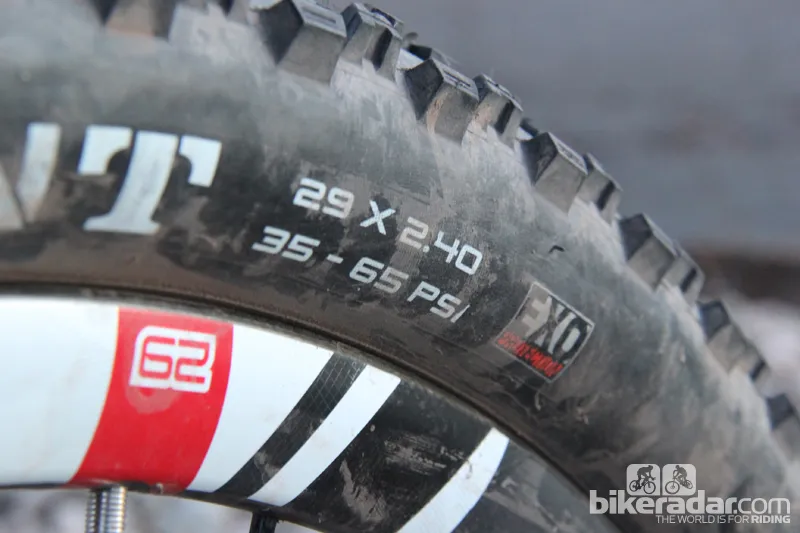
The pressure ranges printed on the sides of your tires are educated guesses
The variables that impact tire performance can be broken down into six categories, and while companies might not be able to account for all of them, you can.
Six things to consider when finding your perfect tire pressure
1 Rider weight: How a tire performs at a given pressure is relative to the rider’s weight. For example, a 145lb (66kg) rider might find that 35psi in a 26x2.25in tire feels too hard and lacks traction. Conversely, a 250lb (113kg) rider could find that pressure too low, resulting in tire squirm or even pinch flats.
2 Tire volume: Tire volume and pressure go hand in hand. A tire’s volume will determine how a given pressure 'feels'. For example, 35psi in a 700x25mm tire will feel almost flat, while 35psi in a 26x3.8in model will feel rock solid to the touch – the wheel will bounce off, rather than absorb, a trail's irregularities.
3 Terain: What are your local trails like? Fast and flowy? Or a series of chunky rock gardens? If the latter, consider bumping up your pressure to combat pinch flats and sidewall damage.
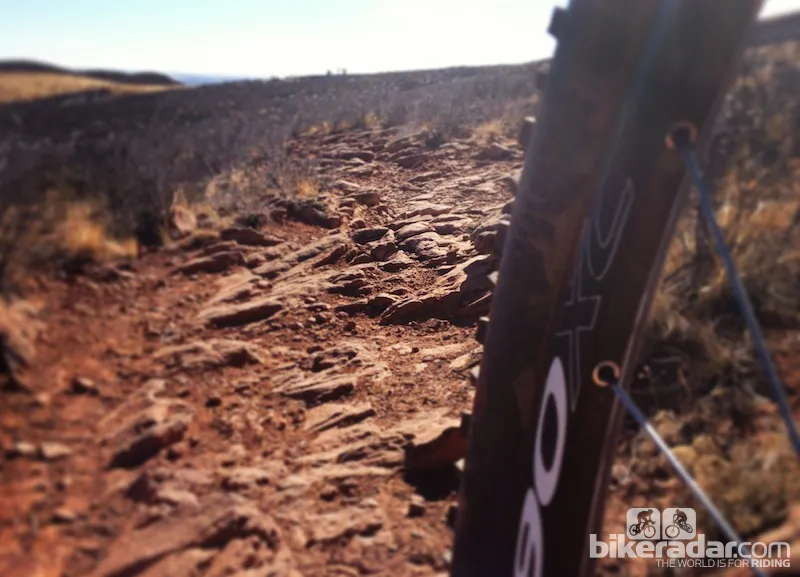
Got rocks? Consider upping your air pressure
4 Riding style: How you ride is as important as where you ride. The more aggressive your style, the more likely it is that you'll need to run a bit more pressure. Or are you a finesse type – do you ride 'light; on the bike? Do you try to pick the cleanest line through a rock garden, or do you prefer to charge ahead with reckless abandon? Do you keep your wheels on the ground, or do you enjoy hucking off jumps and drops?
5 Rim width: This plays a critical role in determining how low you can go without sacrificing performance. A wide rim does a better job of supporting a tire than a narrow one. For a given tire size, a wider rim will allow you to run a lower pressure without the tire squirming and folding underneath you.
6 Tire construction: The way a tire's casing is made will impact how it feels at a given pressure in much the same way as your weight does. Tires with high TPI (threads per inch) casings are generally more supple than those with low TPI counts.
You might find that you need to increase your tire pressure when swapping from a low TPI tire to one with a higher TPI count, and vice versa. Also, models that feature stiffer, reinforced sidewalls as well as tubeless/UST tires might need to be run at lower pressures to achieve the same level of performance as those with thinner, more supple casings.
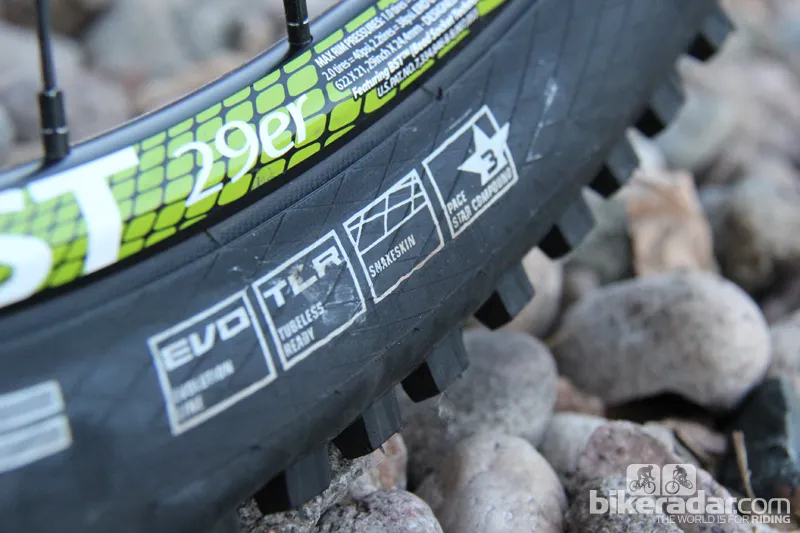
Tires with reinforced sidewalls offer increased protection from cuts and abrasions
Sorting out a tire pressure that's right for you is as much an art as a science. Keep these six factors in mind and take the time to experiment. Be sure to bring a pump and, if possible, a gauge to help find your perfect number.
What about you? Have you found a tire pressure that works well for you? Share your setup, from tires and terrain to rider weight and air pressure, in our comments section.
